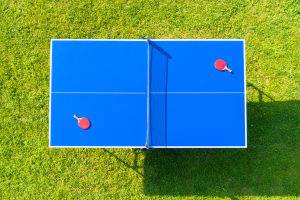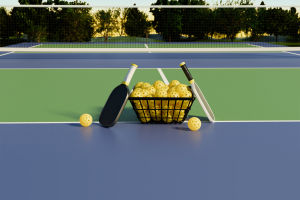
Badminton, an exciting and fast-paced sport, is enjoyed globally by players of all ages. Whether it’s a casual game at a park or a competitive tournament, knowing the basic rules and equipment can enhance your experience.
We’ll walk you through everything you need to know about badminton’s rules, scoring, and the necessary equipment, helping you understand how the game works and what to expect.
Badminton Scoring System
In modern badminton, the scoring system has evolved over time. Initially, the game used a 15-point scoring system, where the player serving could only score if they won the rally. However, this led to longer matches that became less appealing to viewers and harder to manage in tournaments.
To fix this, the International Badminton Federation introduced a new rule in 2001, where each game was played to 7 points, with a "best of five" format. But, this system was criticized for making the game too simple and lacking excitement. After a year, the rules reverted to a 15-point system, which again was revised in 2006 to the current 21-point format. In this system, a player can score a point regardless of who serves, and matches are typically played to 21 points with a two-point lead required to win.
Badminton Equipment
To play badminton, you need just a few essential pieces of equipment. The shuttlecock, commonly called the "birdie," is made from 16 feathers attached to a cork base. The feathers are about 62–70 mm long, and the shuttlecock weighs between 4.74 and 5.5 grams. The racquet used to hit the shuttlecock is generally not longer than 680 mm, with the face of the racquet being less than 290 mm in length and 230 mm in width.
Badminton Court Dimensions
A standard badminton court is rectangular, measuring 13.4 meters in length and 6.1 meters in width. The height of the ceiling must exceed 6.1 meters to ensure players can clear the shuttlecock properly. The net posts are fixed to the ground, and the height of the net is set at 1.524 meters from the ground. The court is divided into two halves, each containing a service area and a receiving area.
The boundary lines on the court are marked with a 40 mm width. For singles, the side boundaries are narrower, while doubles have wider side boundaries. The back line is also shorter in doubles, but the back line for singles is longer.
Service and Receiving the Shuttlecock
When starting a game, the server must stand within the designated service area, with their feet touching the floor, but not crossing the boundary lines. The shuttlecock must be served from below the waist, and the racquet head should point downward during the serve.
In singles, when the server’s score is even, they serve from the right-hand service court; if the score is odd, they serve from the left. In doubles, the server serves from the right-hand side when their team's score is even, and from the left when it is odd. After the serve, the game continues with the players alternating turns.
Scoring Points
Once the serve has been made, players alternate hitting the shuttlecock back and forth until one player fails to return the shuttlecock or hits it out of bounds. In the 21-point scoring system, points are scored on every rally, and players can win the serve by winning a rally. If the score reaches 20-20, the game continues until one player leads by two points. The first player or team to score 30 points wins the game.
Faults and Violations
During a match, various violations can result in a loss of a point for the offending player. These include:
1. Serving too high – The shuttlecock must be served below 1.15 meters.
2. Illegal serve – The racquet must hit the shuttlecock from below the waist, and the head of the racquet must be pointing downward.
3. Shuttlecock going out of bounds – If the shuttlecock lands outside the boundaries, the player loses the point.
4. Net violations – If the player touches the net with their racquet, body, or clothing, they lose the point.
5. Hitting the shuttlecock twice in a row – Players can’t strike the shuttlecock twice before it crosses over to the other side.
6. Holding the shuttlecock – A player cannot hold or carry the shuttlecock on their racquet.
Final Thoughts
Badminton is a fun and competitive game that is easy to pick up but challenging to master. By understanding the basic rules, equipment, and scoring system, we can enjoy the game more and appreciate the skills involved. Whether playing casually or competitively, badminton offers a fantastic way to stay active and have fun. So, what are you waiting for? Grab your racquet and shuttlecock, and let’s play!
The Rules of Badminton - EXPLAINED!
video by Ninh Ly


